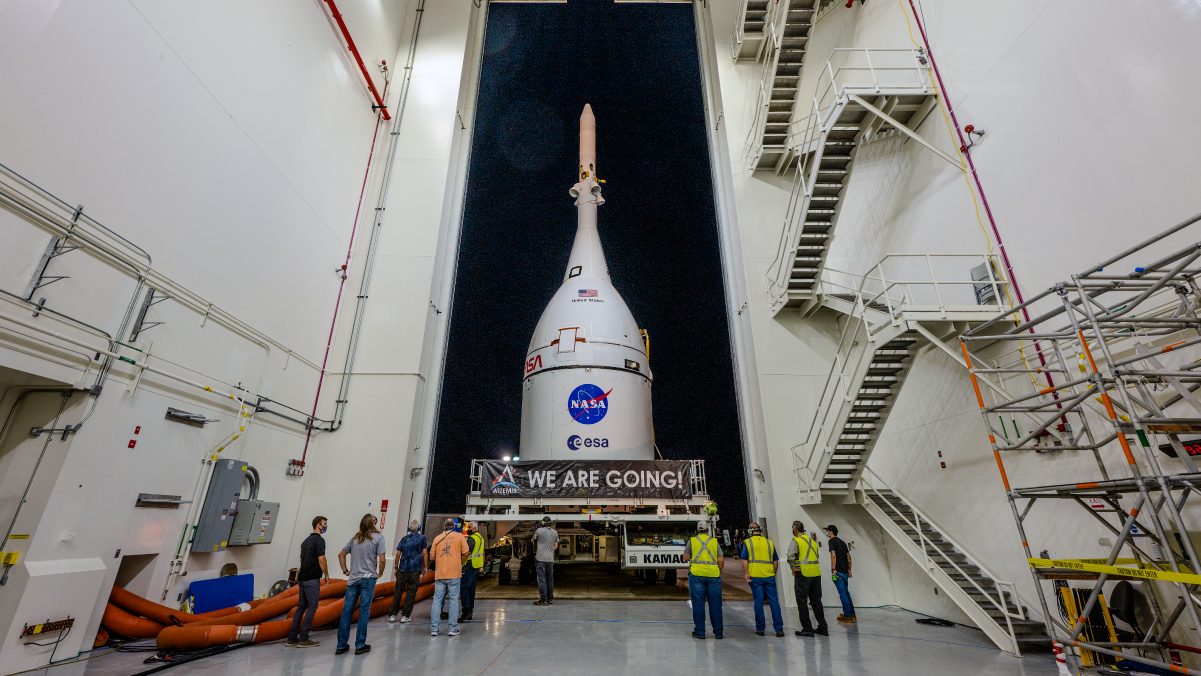The Apollo Moon missions inspired a generation of scientists, engineers, and visionaries to aim higher than anyone thought possible. But it has been almost 50 years since astronauts ventured beyond Earth’s orbit.
That is set to change.
NASA’s uncrewed Artemis I mission, scheduled for this year, will test the agency’s Orion spacecraft and super heavy-lift Space Launch System rocket. An ambitious around-the-Moon flight, Artemis I will pave the way for future missions that will bring humans back to the Moon and even beyond, to Mars.
As part of the Callisto payload onboard the Orion spacecraft, Webex will demonstrate how secure, flexible video collaboration can be just as valuable in deep space as in an earthbound enterprise. Callisto is a technology demonstration payload and was developed through a partnership with Cisco, Lockheed Martin, and Amazon.
To learn more about the role of Webex on the Artemis I mission, we spoke with Aruna Ravichandran, vice president and chief marketing officer for Webex by Cisco.
Q. Hello, Aruna! How does it feel to be part of such a groundbreaking mission?
A. I am extremely excited that we, as a company, have an opportunity to be a part of something so amazing. I believe we will one day look back and call this the Artemis generation. I’m especially excited that NASA stated a goal to land the first woman and the first person of color on the Moon. And then they’ll eventually continue onto Mars.
Q. What are some of the key capabilities that Webex will demonstrate during the mission?
A. We look forward to demonstrating, for the first time, how commercial collaboration technology like Webex can enable future astronauts to communicate with co-workers and their loved ones on Earth, all the way from deep space.
Inside the Orion capsule, Webex is part of the Callisto payload. It’s a custom-built, state-of-the-art version of Webex, which is running on an iPad tablet. And it will allow virtual crew members in a custom room built by the industry partners inside the Mission Control Center at NASA’s Johnson Space Center in Houston to do a video conference and collaborate using the technology. They will demonstrate audio and video calls, as well as multiparty collaboration, including whiteboarding, via a connection to a Webex Desk Pro and Webex Board Pro devices.
We are all about being inclusive. And groups outside the control center, like schools, will be able to check in via Webex. Imagine how cool and inspiring that will be! By bringing our technology into Orion, we help to connect the world.
Q. How did the partnership with Lockheed Martin begin?
A. Cisco and Lockheed Martin were both sponsors for the Apollo 50th gala, hosted by the Aldrin Foundation and celebrating the anniversary of the first Moon landing. Around that time, Lockheed Martin, the prime contractor building Orion and the leader of the Callisto project, reached out to us to gauge our interest in bringing Webex into Callisto. They also brought in Alexa, from Amazon, for AI voice-assistant technology.
Q. Time and again, space exploration has proven to benefit people back on Earth. How do you see these missions helping with some of our current problems?
A. These kinds of space missions are all about bringing people together and inspiring the next wave of innovation. I love this quote from Jeetu Patel, who is the EVP and general manager for the collaboration and security business at Cisco: “Human potential is global, but opportunity is not.” With this amazing innovation we now have an opportunity to level the playing field and break down the barriers across geographies, location, socioeconomic levels, languages, and now even space!
Q. Webex has added a lot of new innovations recently. Which features are you most excited about, whether for future space missions or back home on Earth?
A. We can translate from English to 108 languages in real time via Webex. And we can translate 10 languages to any number of other languages across the board. How cool is that? Imagine an expert who speaks French needs to be connected to the Orion capsule; she could communicate easily with our real-time translation capability. Webex Hologram is another innovation we recently announced, and I could imagine it on a future mission. It leverages augmented reality to combine feature rich Webex meeting functionality with immersive holograms and allows you to communicate with 3D image of a colleague or a friend — closing the gap between virtual and in-person collaboration. And I could see Webex noise cancellation being very important in space. Whatever other noise is in the spacecraft would be automatically eliminated through the power of Webex.
Q. What do you see for the future of space exploration and how can Cisco continue to help?
A. I’m excited about how inspirational Artemis I will be. As part of the project, we and Lockheed Martin are partnering with Amazon and its Future Engineers Program to enable STEM classrooms to connect with the Callisto room in mission control during the mission. And these students may be speaking with aerospace engineers, using Amazon Alexa and Webex. To inspire students and get them to realize their future potential is just so important. So, it’s great to be part of that.
We are proud and honored to have our technology onboard the Orion spacecraft, as part of Artemis I mission and to have the opportunity to inspire the Artemis generation.
Webex by Cisco, leaving Earth without leaving home behind
To learn more about Webex by Cisco solutions and Artemis I technology integrations, visit the Webex Blog.
###
Related content:
- Webex Holograms are the next step in Hybrid Work
- The reimagined contact center: Proactive and pain-free
- New Webex by Cisco Innovations Address Challenges of Hybrid Work for Organizations of All Sizes



